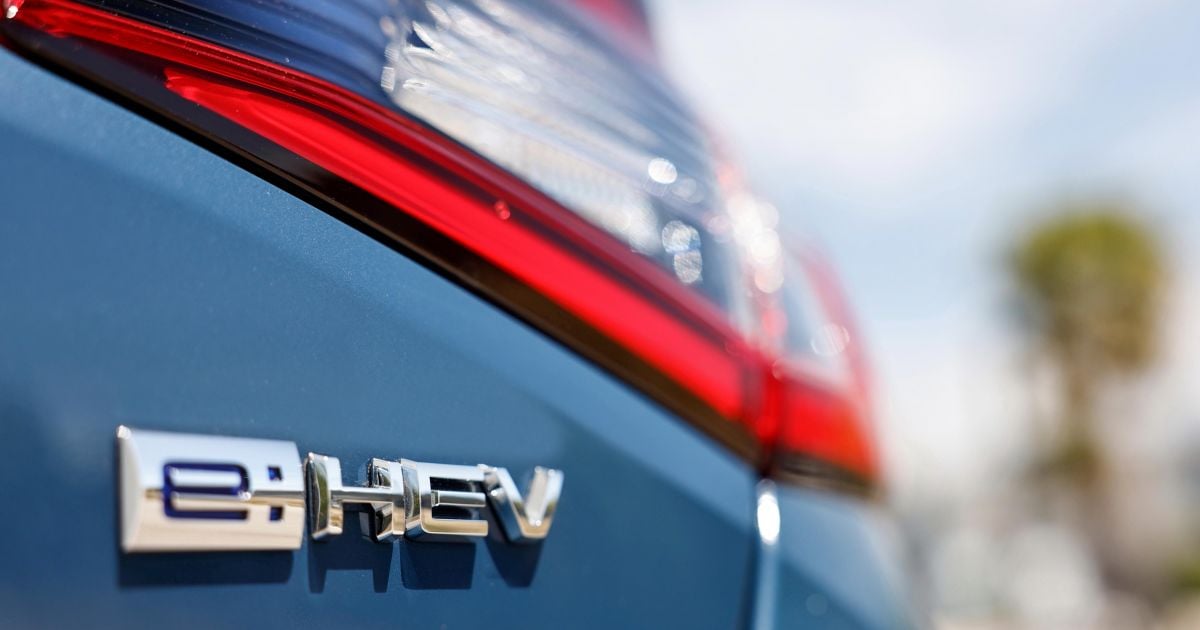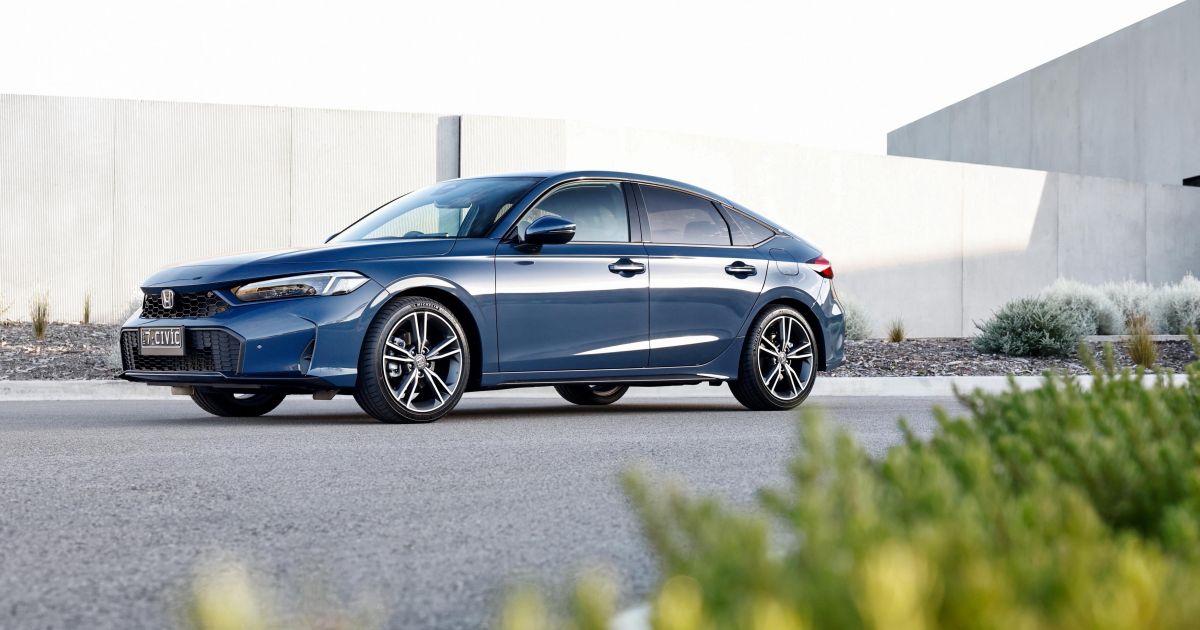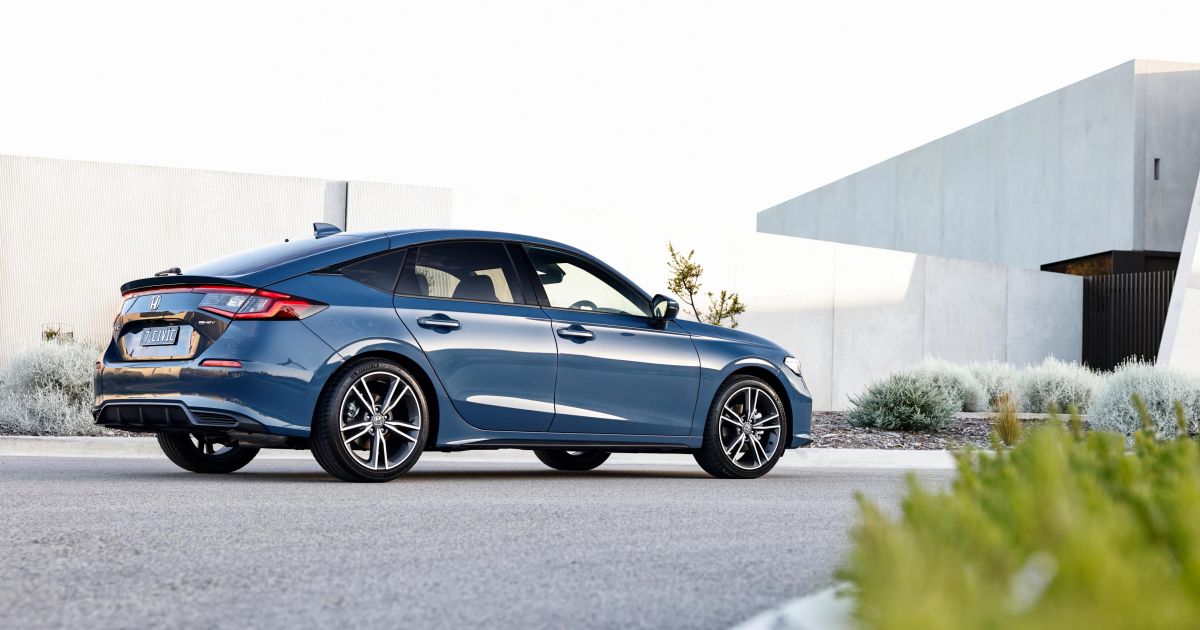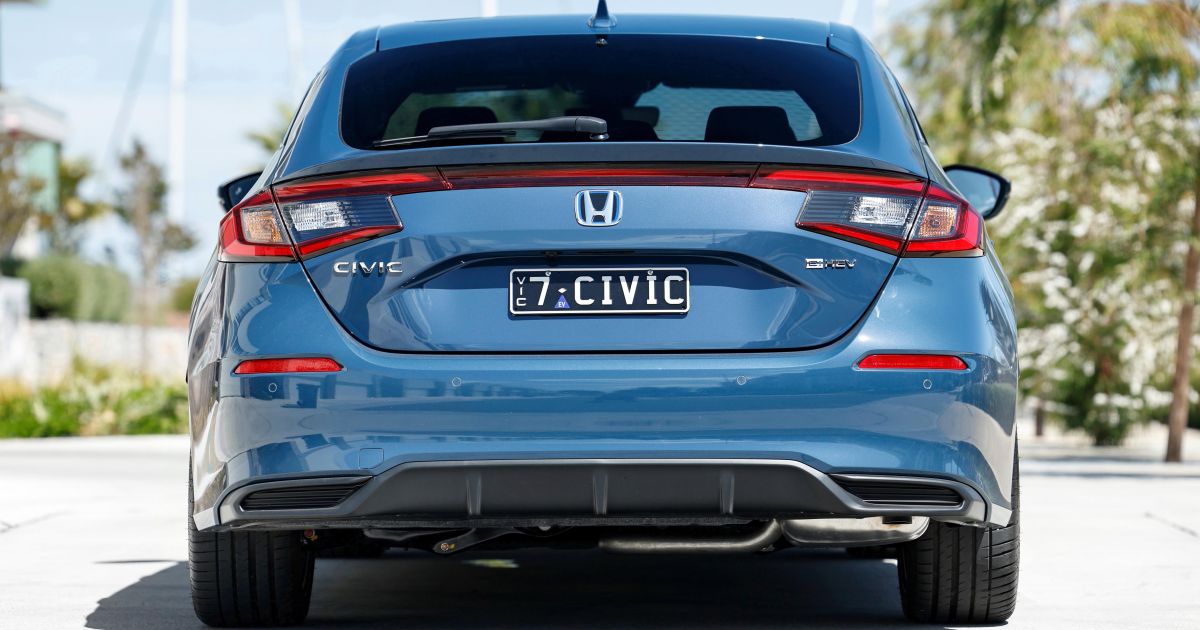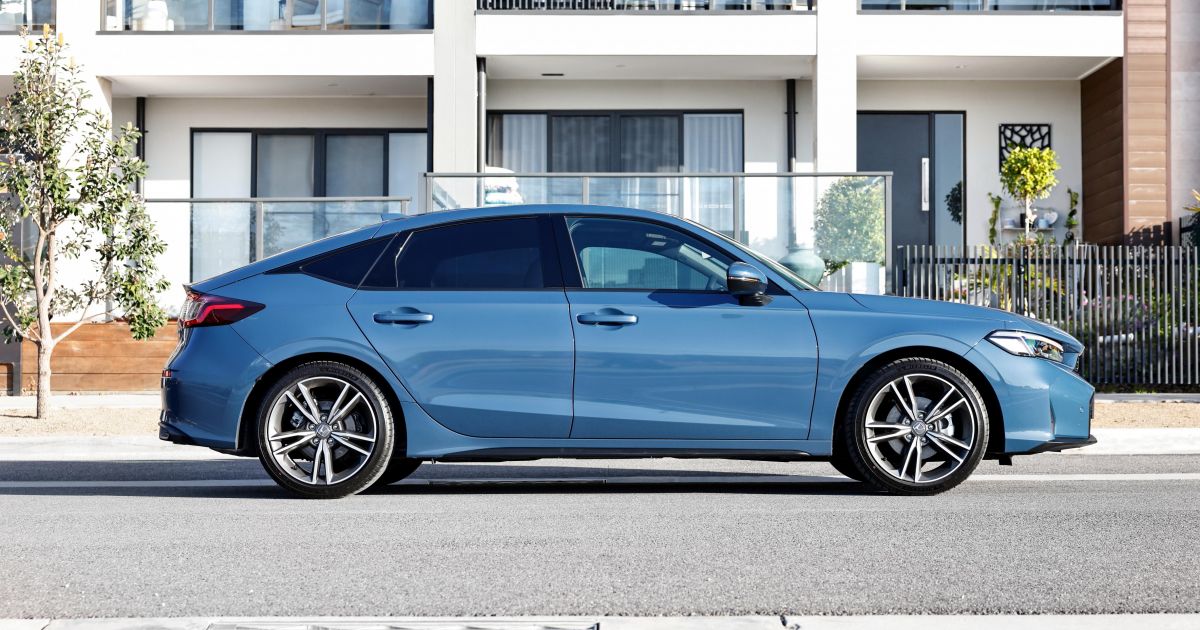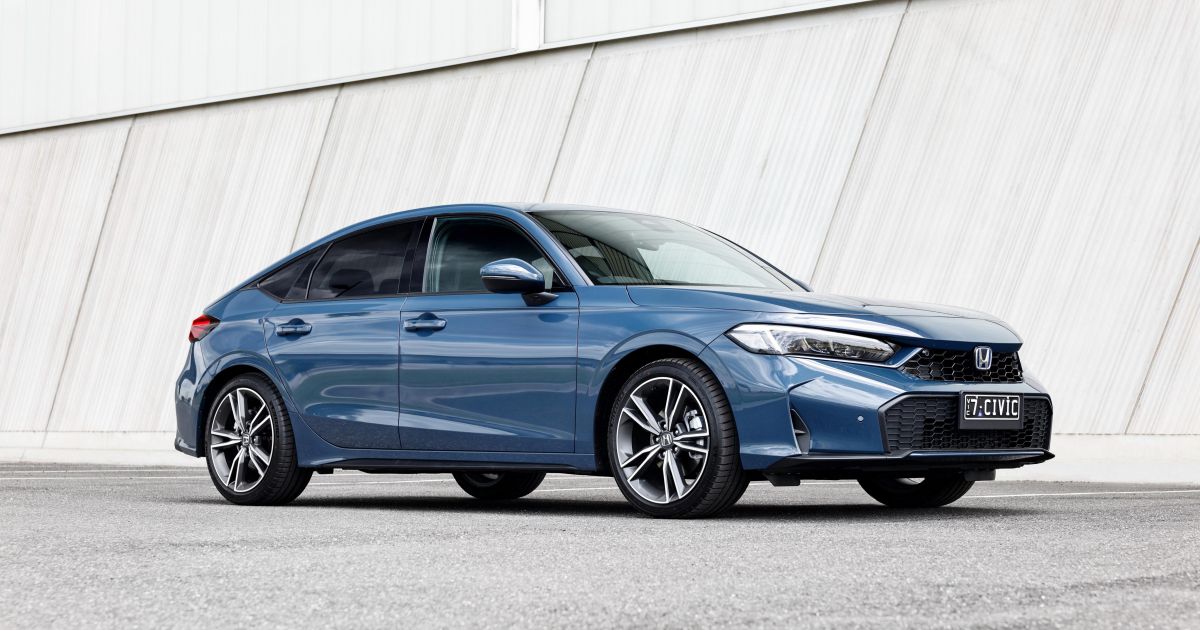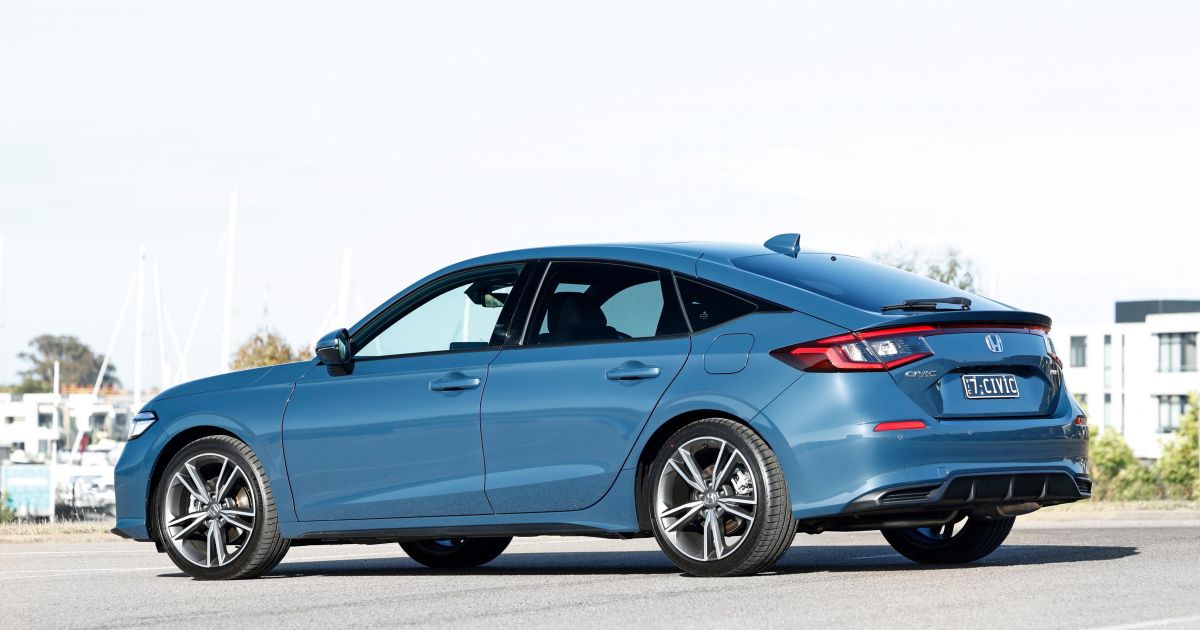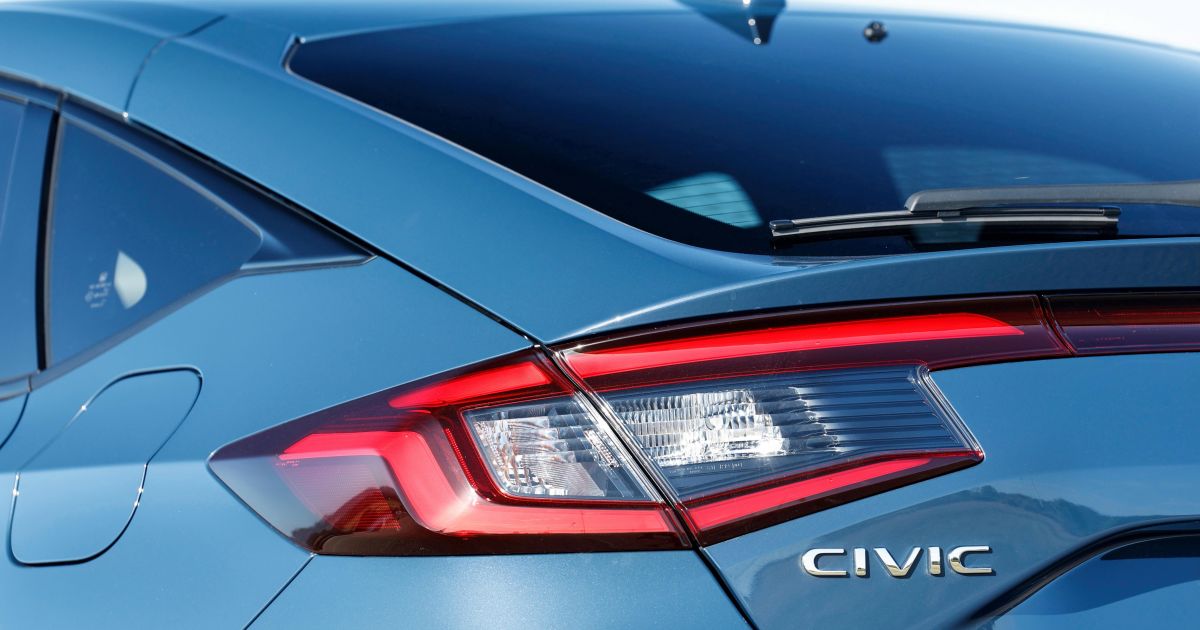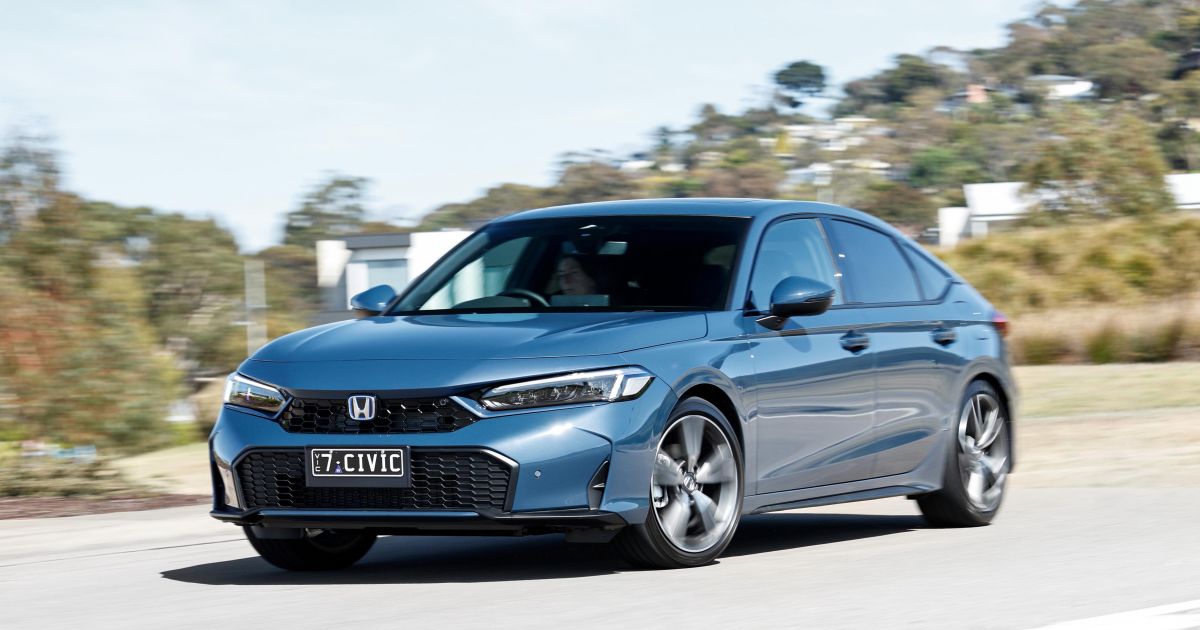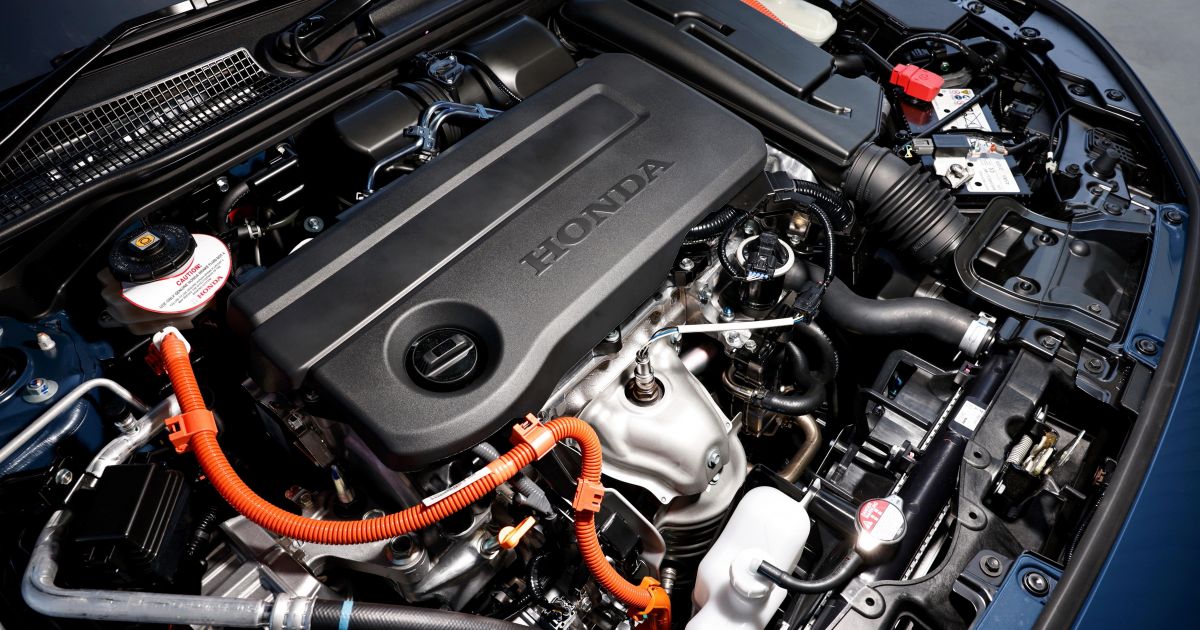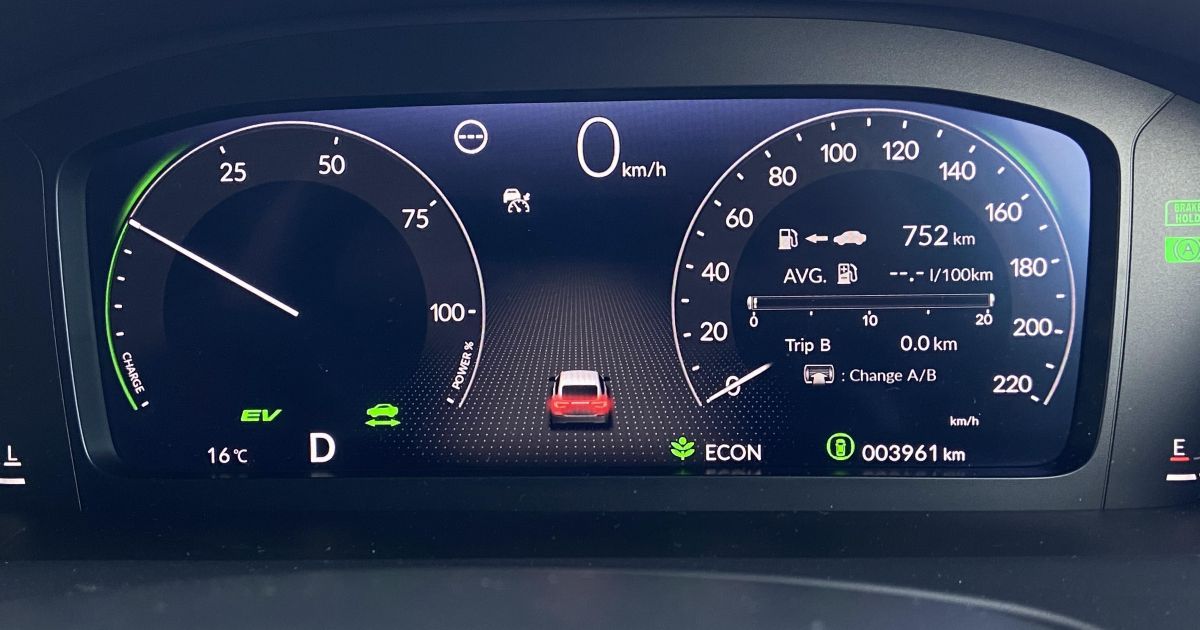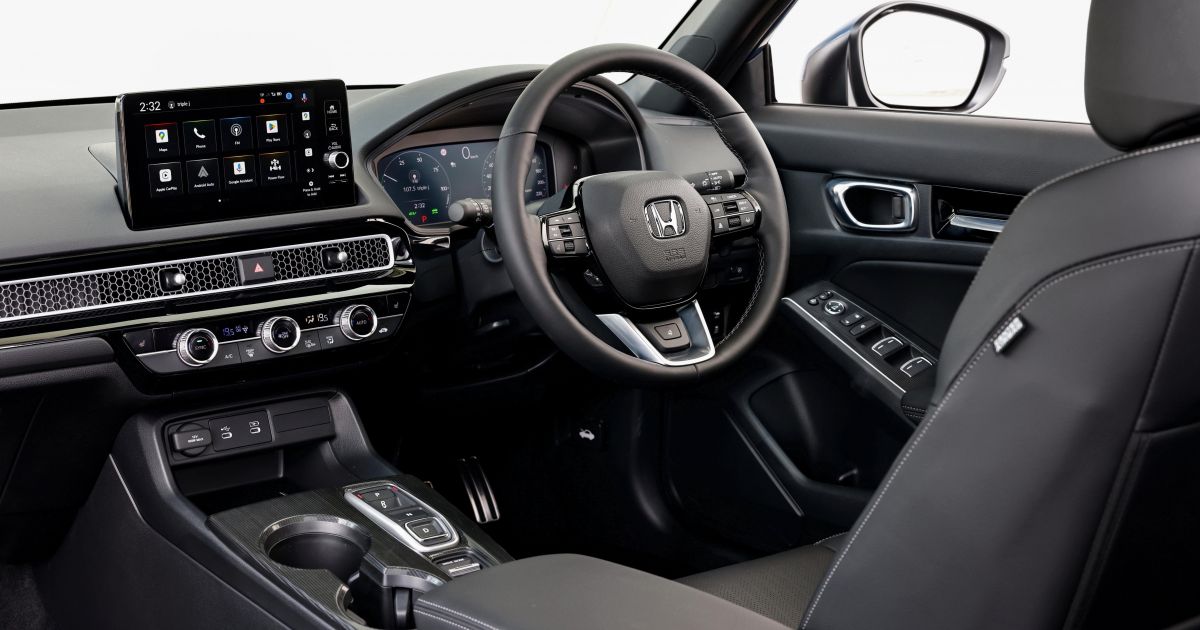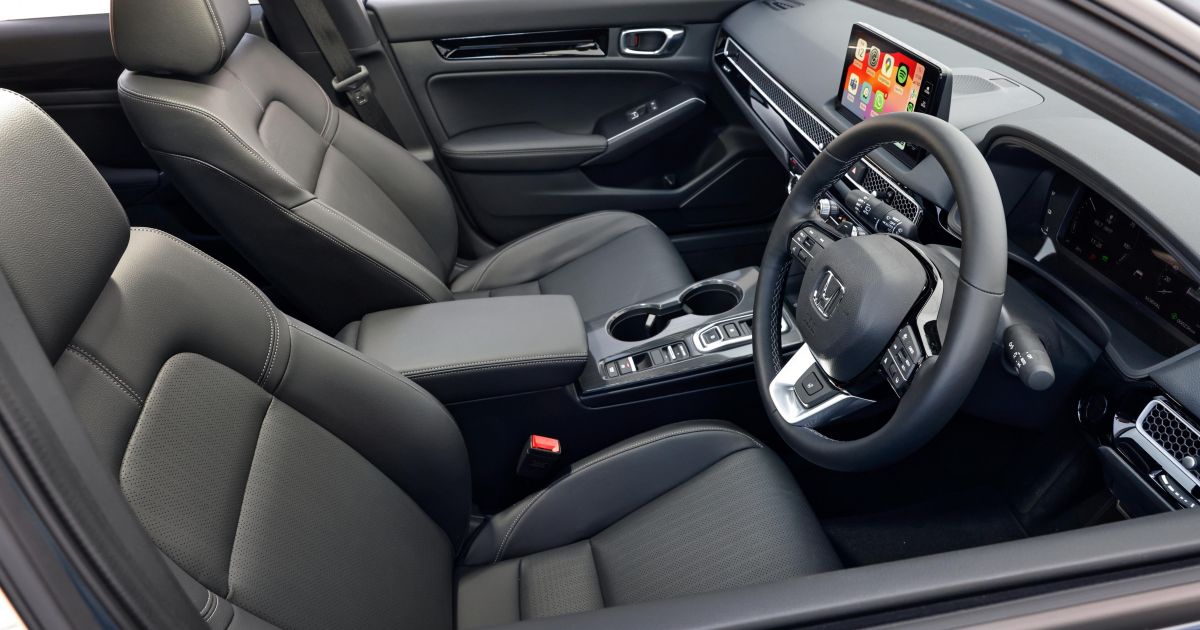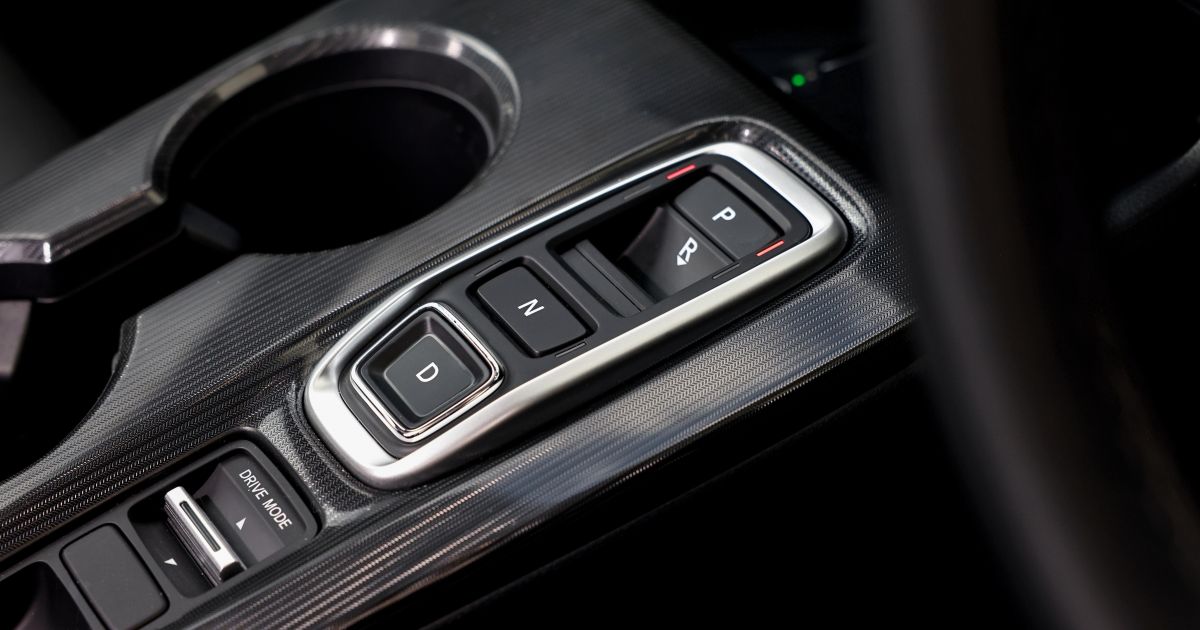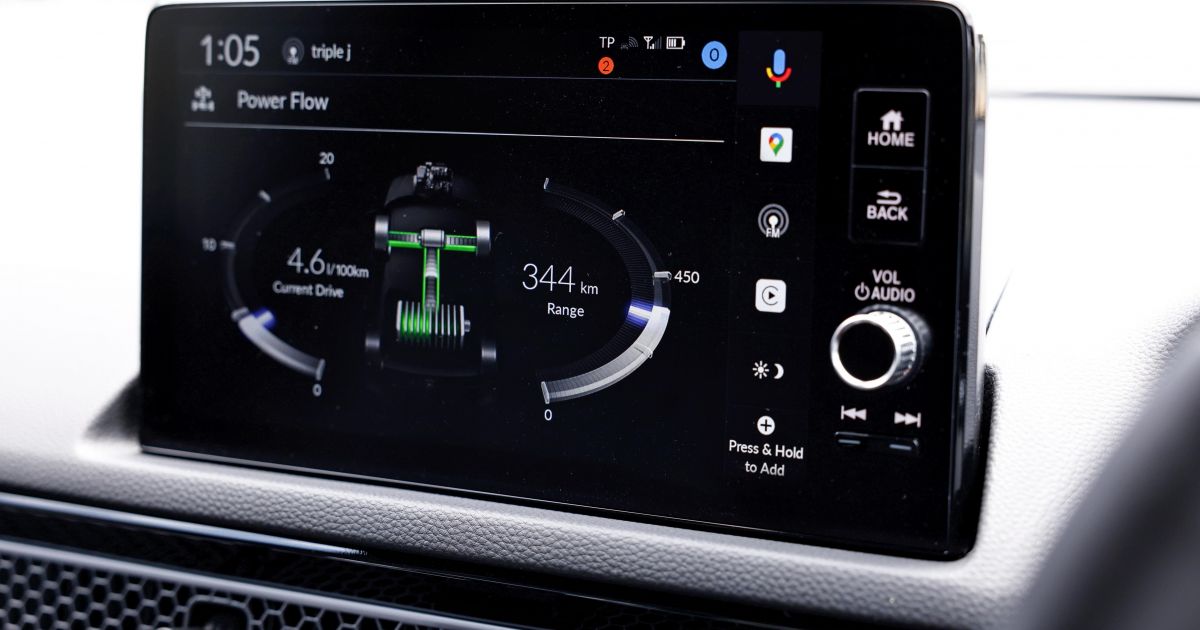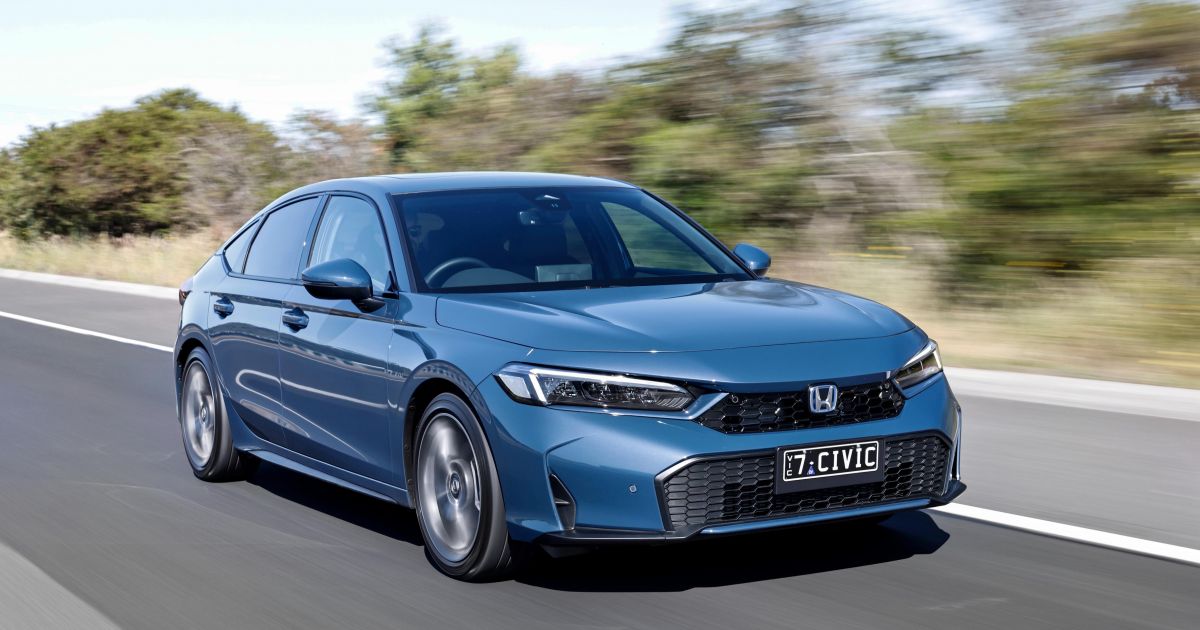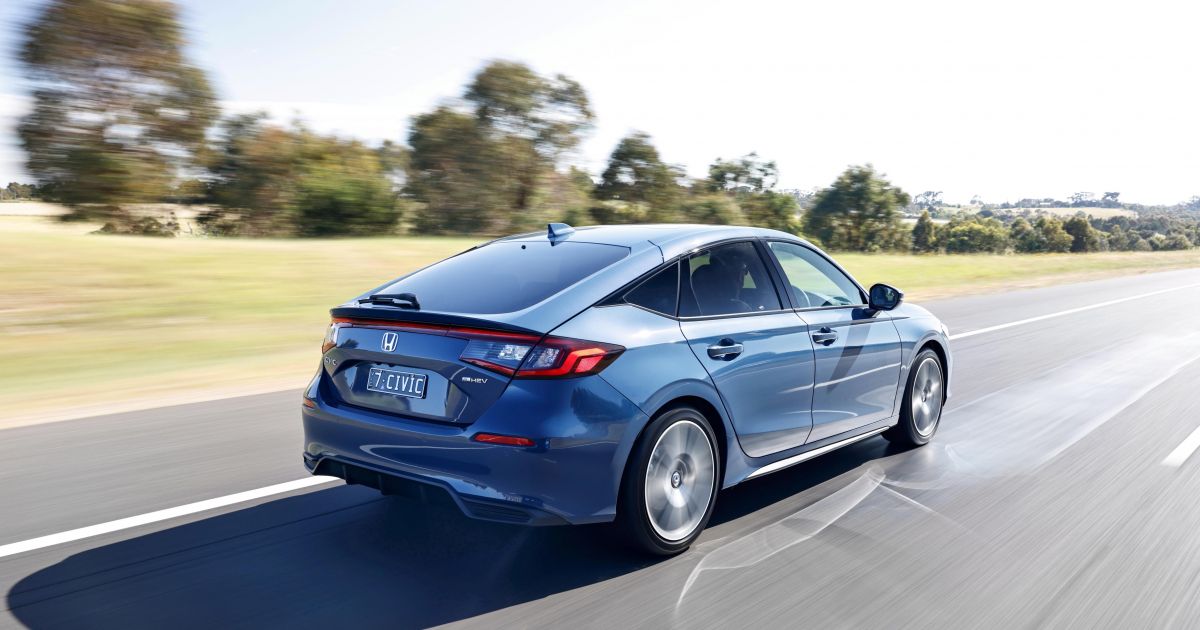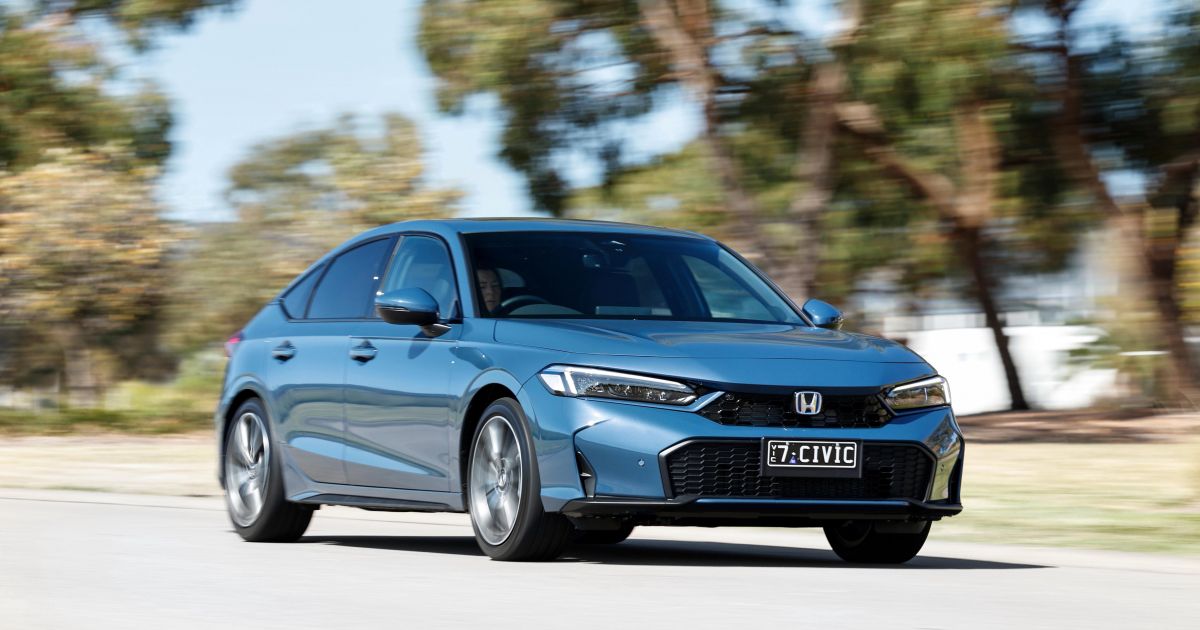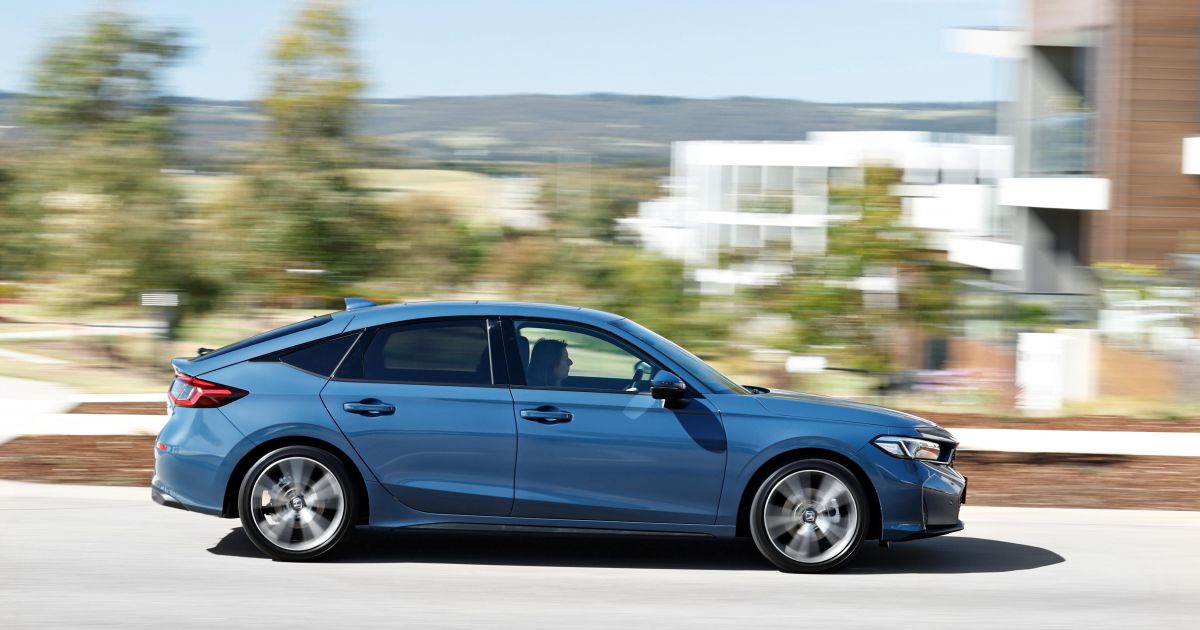SPONSORED
It’s been a necessary evil since the birth of the automobile, but does anyone actually enjoy going to the petrol station?
Treading on a sticky, diesel-coated forecourt is hardly a red carpet or even a warm welcome mat, and feeling your wallet shrink at the same rate as your fuel tank when filling up isn’t a great experience either.
Then there’s the endless temptation of shiny, sugary treats at the counter, shouting at you to spend even more money. Or the lukewarm yellow food that’s been sitting under a heat lamp for God only knows how long.
Sure, petrol stations are convenient, and refuelling is quicker than recharging an electric car, but what if there was a way you could visit them less often – like your dentist – to save you both time and money. Sounds good, right?
CarExpert can save you thousands on a new Honda Civic. Click here to get a great deal.
Well you can, simply by choosing a more efficient car like a hybrid, which combines a lean-burning petrol engine with an electric motor to help reduce fuel consumption.
Now, before you run to the dealership to trade-in your old gas-guzzler, not all hybrids are created equal, and some do a better job than others at saving fuel in different driving scenarios.
As a general rule though, hybrids provide significant advantages in urban areas where the electric motor does more of the heavy-lifting in stop-start traffic than it does beyond the city limits at highway speeds.
So, if you’re mostly bound by the suburbs then a hybrid is an ideal fuel-saving solution.
To test this out, we set up an experiment with the latest Honda Civic e:HEV, which features one of the most advanced conventional hybrid powertrains available today, to see how long we could avoid a petrol station, and therefore how far we could travel on a single tank of fuel exclusively in urban traffic by replicating the average Australian daily commute.
On that topic, according to the latest census data from the Australian Bureau of Statistics (ABS) taken in 2021, more than half (53.1%) of working Australians drive a vehicle to work every day.
This, however, is likely to be an anomaly as the ABS recognised the 2021 data is the lowest figure in 40 years, and significantly less than the highest 63 per cent result from the previous 2016 census, most likely due to the dramatic rise in stay-at-home work that was in place during the COVID crisis at the time.
Either way, it’s clear that the majority of Australians use a vehicle to get to work every day, with twice as many (6.4 million) vehicles on our roads in 2021 than there were in 1981 (3.2 million).
According to the same census data, the national average commute from home to work is 16.5km each way, with drivers spending a total of 48 minutes behind the wheel every weekday.
With all of that in mind, we set up a daily schedule to complete a consistent loop during peak-hour traffic between 4:30pm and 6:00pm Monday to Friday, which included a broad range of urban driving conditions.
The route measured a total of 32.1km – replicating that average daily commuting figure – starting from the suburbs before heading into the CBD and back, taking in arterial roads with an 80km/h speed, suburban streets with 60km/h and 50km/h limits, and dense urban streets with a maximum speed of 40km/h.
Across that distance, there was a total of 49 traffic lights, seven roundabouts and four stop-sign intersections. So, there were plenty of stop-start events.
As for the car itself, the Honda Civic is now exclusively available as hybrid model, with two variant choices: the entry-level L we’re using for this test, which costs $47,990 drive-away, and the flagship LX that commands a $6000 premium in exchange for extra features.
Both model grades share the same high-tech hybrid powertrain, which links a lean-burning 2.0-litre petrol four-cylinder engine with a CVT automatic transmission that incorporates a pair of electric motors; one that is primarily used a generator to recharge the 1.0kWh lithium-ion battery mounted under the rear seats, and a more powerful traction motor that assists the petrol engine when driving.
| Specifications | Honda Civic e:HEV L |
|---|---|
| Engine | 2.0-litre four-cylinder petrol-electric |
| Engine outputs | 105kW/186Nm |
| System outputs | 135kW/315Nm |
| Battery | 1.0kWh |
| Transmission | CVT |
| Drive type | FWD |
| Weight | 1465kg |
| Fuel economy (claimed) | 4.2L/100km |
| Fuel economy (as tested) | 4.4L/100km |
| Fuel tank capacity | 40L |
| Fuel requirement | 91-octane standard unleaded |
| CO2 emissions | 96g/km |
The engine alone generates 105kW of power and 186Nm of torque, and while Honda does not quote separate outputs for the electric motors like other automakers, its says the powertrain has a combined maximum power output of 135kW and 315Nm of torque.
In most situations, the powertrain acts like a regular series-parallel hybrid with the primary electric motor used to get things moving away from a standstill, before the petrol engine chimes in and they work together.
The generator unit is used to recharge the battery pack through regenerative braking and under deceleration, but it can also reverse its flow and provide additional power under heavy acceleration.
However, unlike some other systems, the Honda can also decouple the petrol engine at cruising speeds and run entirely on electricity.
Now, because the battery capacity is reasonably small, it can’t do this for long durations like a plug-in hybrid would. But it does make a significant improvement to its fuel consumption, as Honda claims an average fuel consumption of just 4.2L/100km.
With a 40-litre fuel tank, that should deliver a theoretical driving distance of around 950km between refills, which means it would take almost six weeks of Monday-to-Friday commuting before we needed to visit a petrol station again. Sounds too good to be true.
However, when filling the Civic for the first time, and resetting the trip computer, its digital dashboard indicated I could travel 752km on a single tank, which seems a little more realistic. So, with that, let the experiment begin.
Thankfully, the latest 11th-generation Honda Civic is a very nice car to spend a lot of time in thanks to a spacious and comfortable cabin that is equipped with the latest in digital conveniences.
From the driver’s point of view, the cloth-trimmed seat has plenty of adjustment to suit all types of drivers and is both sumptuous in its cushioning and supportive in its bolstering. In fact, the Civic is a high-water mark for comfort in the small-car class.
On top of that, there’s excellent vision through the glasshouse, the large wing mirrors provide a wide view to adjacent traffic (which is always good in heavy traffic), and the three-spoke steering wheel falls nicely to hand with a logical array of fingertip controls (all the audio settings are on the left side and the cruise control is on the right).
Plus, it is heated which makes for a nice way to start on a chilly winter’s morning.
The digital instrument cluster is also easy to read due to crisp, clean graphics that include a traditional speedometer on the right and a power meter on the left, which makes it easy to monitor when the powertrain is drawing from or replenishing the battery.
If you’re interested, that is quite literally the only way you can tell when the petrol engine is active as the transition from electric to hybrid power is totally seamless.
Unlike other hybrids, in which it is obvious when the petrol engine comes to life – either through a jerky motion, more sudden acceleration or audibly – the Civic’s engine is supremely quiet and smooth.
And it also feels punchier than its power outputs suggest, with instant response and decent acceleration when you mash the throttle pedal from any speed, which we did on several occasions during this experiment.
In fact, we didn’t lightfoot the Civic at all, as it was important to replicate normal driving behaviour during this experiment. We also used its dual-zone climate control system the whole time and tapped into the wireless Apple CarPlay via its 9.0-inch touchscreen infotainment display to listen to music or podcasts for entertainment – just as you would normally.
The end result took longer than we anticipated. After driving the same loop at the same time every day during the working week, we covered just over 700km before the fuel light came on. And we still had more than 50km of driving range available before it was completely empty.
In total, it took 21 days, and 13.5 hours, of driving at an average speed of just under 50km/h to achieve a final fuel consumption figure of 4.4L/100km, which is pretty close to Honda’s claimed figure.
So, that equals a full month between visits to the petrol station for the average Australian if you just drive to work and back. It would be even longer if you live closer or had less congested traffic.
If you calculate that out, with the current price of standard unleaded petrol, it costs around $800 a year for fuel to run the Civic Hybrid, which is peanuts. And considering Honda only charges $199 for each annual service, that makes it even more attractive.
So, if you want to steer clear of petrol stations more often, the latest petrol-electric powertrains like the one in the Honda Civic e:HEV are proof that fuel-saving technology also saves you time and money.
MORE: Everything Honda


